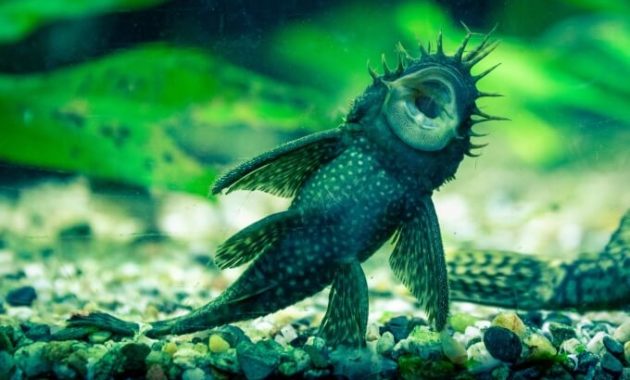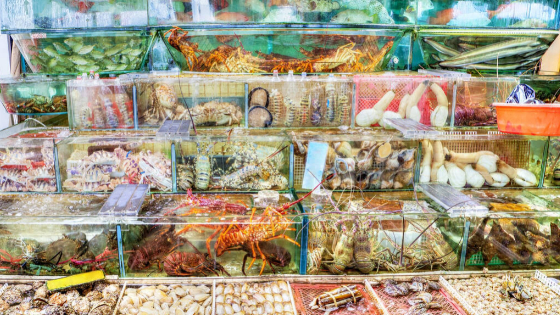
Are you ready to dive into a world of vibrant colors and captivating beauty? Imagine your aquarium transformed into a mesmerizing underwater tapestry, with the colorful mandarinfish as the star of the show. These stunning creatures, like living brushstrokes of a master painter, will add a burst of vibrancy to your aquatic oasis.
But there’s more to these enchanting fish than meets the eye. So, if you’re curious to discover the secrets of their care, feeding habits, and even breeding potential, then let’s embark on a journey that will leave you fascinated and inspired.
Key Takeaways
- Mandarinfish are native to the Pacific Ocean and can be found between the Ryuku Islands and Australia.
- They are known for their bright colors and unique patterns, including shades of blue, yellow, green, orange, pink, purple, and red.
- Mandarinfish require a tank size of around 30 gallons with corals, live rock, and live sand for hiding places.
- Their diet consists of fish eggs, small worms, snails, copepods, and they should be offered a varied diet of small fresh and frozen foods in the home aquarium.
Mandarinfish Information
If you’re considering adding a Mandarinfish to your aquarium, it’s important to have the right information about these vibrant and unique marine creatures. Mandarinfish are small saltwater fish known for their bright colors and unique patterns. They’re native to the Pacific Ocean, specifically found between the Ryuku Islands and Australia.
Mandarinfish require a tank size of around 30 gallons and should be kept with other small, non-aggressive reef species. It’s crucial to provide them with a tank decorated with corals, live rock, and live sand, along with hiding places created by rockwork.
In terms of feeding, Mandarinfish have a mixed diet of fish eggs, small worms, snails, and copepods. In the home aquarium, they should be offered a varied diet of small fresh and frozen foods, such as brine shrimp and black worms.
If you establish a compatible breeding pair, Mandarinfish can spawn in the aquarium by releasing their eggs into the water column.
Mandarinfish General Description

Now let’s take a closer look at the general description of Mandarinfish, these vibrant and unique marine creatures found in the Pacific Ocean. Here are three key aspects to know:
- Origins:
Mandarinfish are native to the Pacific Ocean, distributed between the Ryuku Islands and Australia. They can be found in the coral reefs of this region, adding a splash of color to their surroundings.
- Color:
These fish are known for their bright colors and unique patterns. From royal blue and bright yellow to neon green, vibrant orange, pink, purple, and red, Mandarinfish display a stunning array of hues that make them a captivating addition to any aquarium.
- Maintenance and Care:
Mandarinfish require a tank size of around 30 gallons. The tank should be decorated with corals, live rock, and live sand, providing hiding places through rockwork. They prefer tropical temperatures and slightly alkaline pH with moderate hardness. Additionally, Mandarinfish have specific dietary needs, following a mixed diet of fish eggs, small worms, snails, and copepods.
With their captivating colors and unique characteristics, Mandarinfish are truly a vibrant addition to any aquarium.
Maintenance and Care

To properly care for Mandarinfish in your aquarium, ensure that you provide the necessary maintenance and care requirements.
Mandarinfish require a tank size of around 30 gallons, decorated with corals, live rock, and live sand. It’s important to provide hiding places through rockwork to make them feel secure.
Maintaining tropical temperatures and slightly alkaline pH with moderate hardness is crucial for their well-being.
When it comes to feeding, Mandarinfish follow a mixed diet of fish eggs, small worms, snails, and copepods in the wild. In the home aquarium, offer them a varied diet of small fresh and frozen foods like brine shrimp, black worms, and other small worms. They’ll also eat small organisms off of live rock and live sand.
Feeding Habits

To properly meet the feeding requirements of Mandarinfish in your aquarium, provide them with a varied diet of small fresh and frozen foods such as brine shrimp, black worms, and other small worms, while also allowing them to feed on small organisms found on live rock and live sand.
Here are three important things to remember when it comes to feeding your Mandarinfish:
- Offer a variety of small fresh and frozen foods: Mandarinfish thrive on a diet that includes brine shrimp, black worms, and other small worms. Providing a diverse range of food options will ensure that they receive the necessary nutrients for their overall health and well-being.
- Allow them to feed on small organisms found on live rock and live sand: Mandarinfish are natural hunters and enjoy foraging for food. By providing them with live rock and live sand in their aquarium, you’re giving them the opportunity to hunt and feed on small organisms, which is an important part of their diet.
- Consider supplementing their diet with fish eggs, snails, and copepods: In addition to the aforementioned foods, Mandarinfish also benefit from consuming fish eggs, snails, and copepods. These additional food sources provide them with essential nutrients and help to mimic their natural feeding habits in the wild.
Breeding Information

For successful breeding of Mandarinfish in your aquarium, it’s important to establish a compatible breeding pair and provide them with a high-quality diet and consistent lighting schedule.
To start, ensure that you have a male and female Mandarinfish that are compatible and ready to breed. It’s recommended to introduce them to the aquarium at the same time to increase the chances of pair bonding.
Additionally, feeding your Mandarinfish a high-quality diet is crucial for successful breeding. Offer them a varied diet of small fresh and frozen foods such as brine shrimp, black worms, and other small worms.
Finally, maintain a consistent lighting schedule to mimic natural conditions and stimulate the breeding behavior of the fish.
Different Mandarinfish Species

There are several different species of Mandarinfish that you can choose to add to your aquarium. These colorful and vibrant species will surely be a stunning addition to your tank. Here are three different Mandarinfish species to consider:
- Mandarinfish or Green Mandarin (Synchiropus splendidus): This is the most common species found in aquariums. It features a beautiful combination of bright blue, orange, and green colors.
- Red Mandarin (Synchiropus cf. splendidus): As the name suggests, this species has stunning red coloration. It’s slightly less common than the Green Mandarin but equally mesmerizing to watch.
- Spotted Mandarin (Synchiropus picturatus): This species is known for its unique spotted pattern, which adds a touch of elegance to its appearance. It has a vibrant mix of colors, including orange, green, and blue.
Each of these Mandarinfish species brings its own unique beauty and charm to your aquarium, making it a lively and colorful underwater paradise.
Choosing the Right Aquarium Size

When selecting the appropriate aquarium size, consider the needs and requirements of your Mandarinfish species. Mandarinfish are small in size, but they still require a suitable tank to thrive.
A tank size of around 30 gallons is recommended for Mandarinfish. This will provide them with enough space to swim and explore their surroundings.
It’s also important to decorate the tank with corals, live rock, and live sand, as Mandarinfish prefer hiding places provided by rockwork.
Additionally, maintaining tropical temperatures and slightly alkaline pH with moderate hardness is crucial for their well-being.
Frequently Asked Questions
Can Mandarinfish Be Kept With Aggressive Reef Species?
Mandarinfish should not be kept with aggressive reef species. They are better suited with other small, non-aggressive reef species. It is important to provide a peaceful environment for these vibrant and colorful fish.
How Can I Create Hiding Places for Mandarinfish in My Aquarium?
To create hiding places for your mandarinfish, decorate your aquarium with rockwork, corals, live rock, and live sand. These will provide the necessary hiding spots for your fish to feel secure and comfortable in their environment.
What Is the Ideal Temperature and Ph Level for Mandarinfish?
The ideal temperature for mandarinfish is tropical, and they prefer a slightly alkaline pH with moderate hardness.
Is It Possible to Breed Mandarinfish in a Home Aquarium Without a Compatible Breeding Pair?
No, it is not possible to breed mandarinfish in a home aquarium without a compatible breeding pair. A breeding pair is essential for successful spawning. Conditioning with high-quality foods and a regular lighting schedule is also necessary.
What Are the Differences Between the Different Species of Mandarinfish?
The differences between mandarinfish species include color variations like bright blue, yellow, green, orange, pink, purple, and red. They have varying patterns. The main species is the Green Mandarin, but there are also Red and Spotted Mandarins.
Are Pipefish Compatible with Mandarinfish in the Same Aquarium?
Pipefish can be compatible with mandarinfish in the same aquarium if certain conditions are met. Both species are relatively peaceful, but mandarinfish require a different diet and may compete with the fascinating pipefish for aquarium space. Providing plenty of hiding spots and carefully monitoring their behavior is crucial.
Conclusion
In conclusion, adding mandarinfish to your aquarium is a surefire way to bring vibrancy and beauty to your aquatic paradise.
With their stunning colors and unique patterns, these creatures are sure to captivate any aquarium enthusiast.
With proper care, feeding, and breeding techniques, you can enjoy the mesmerizing presence of mandarinfish in your home.
So go ahead and add a burst of color to your tank with these captivating and exotic fish.




